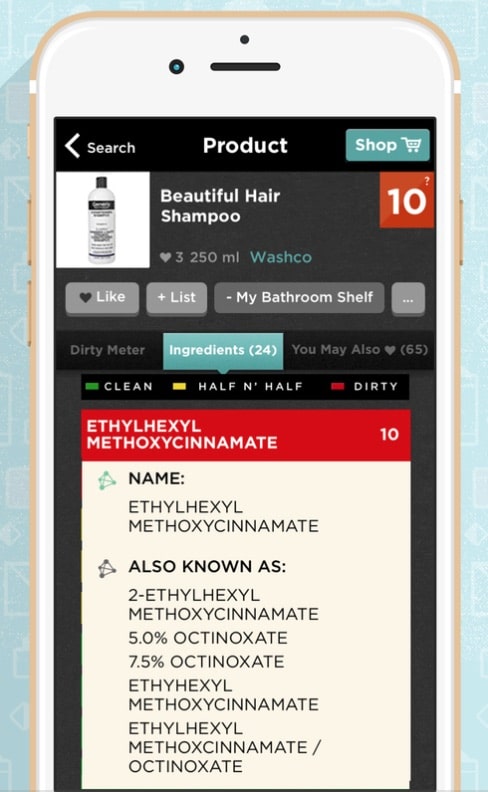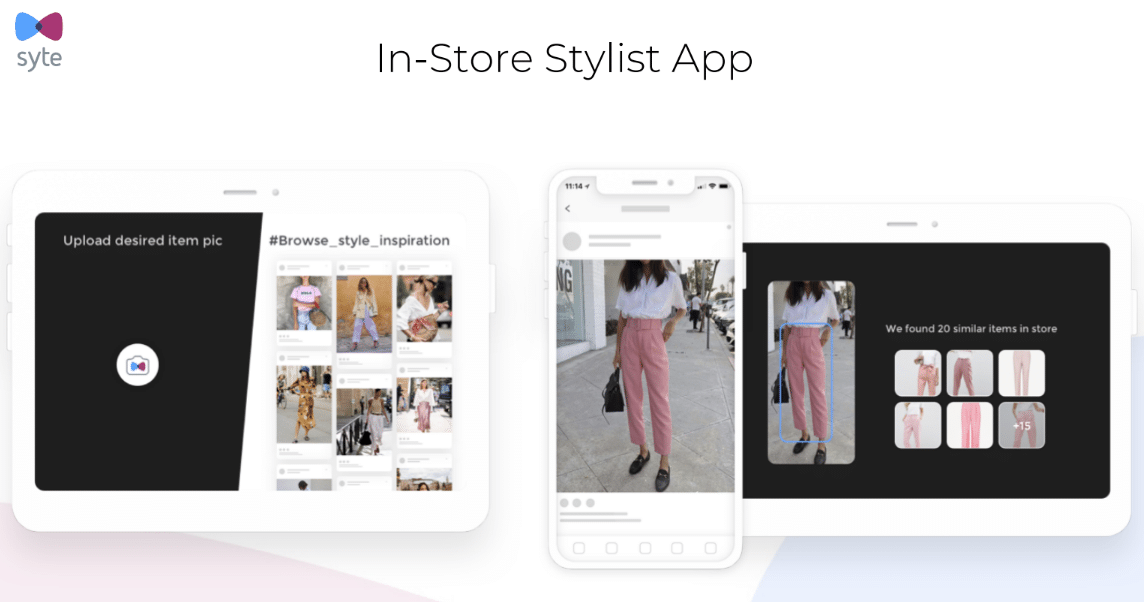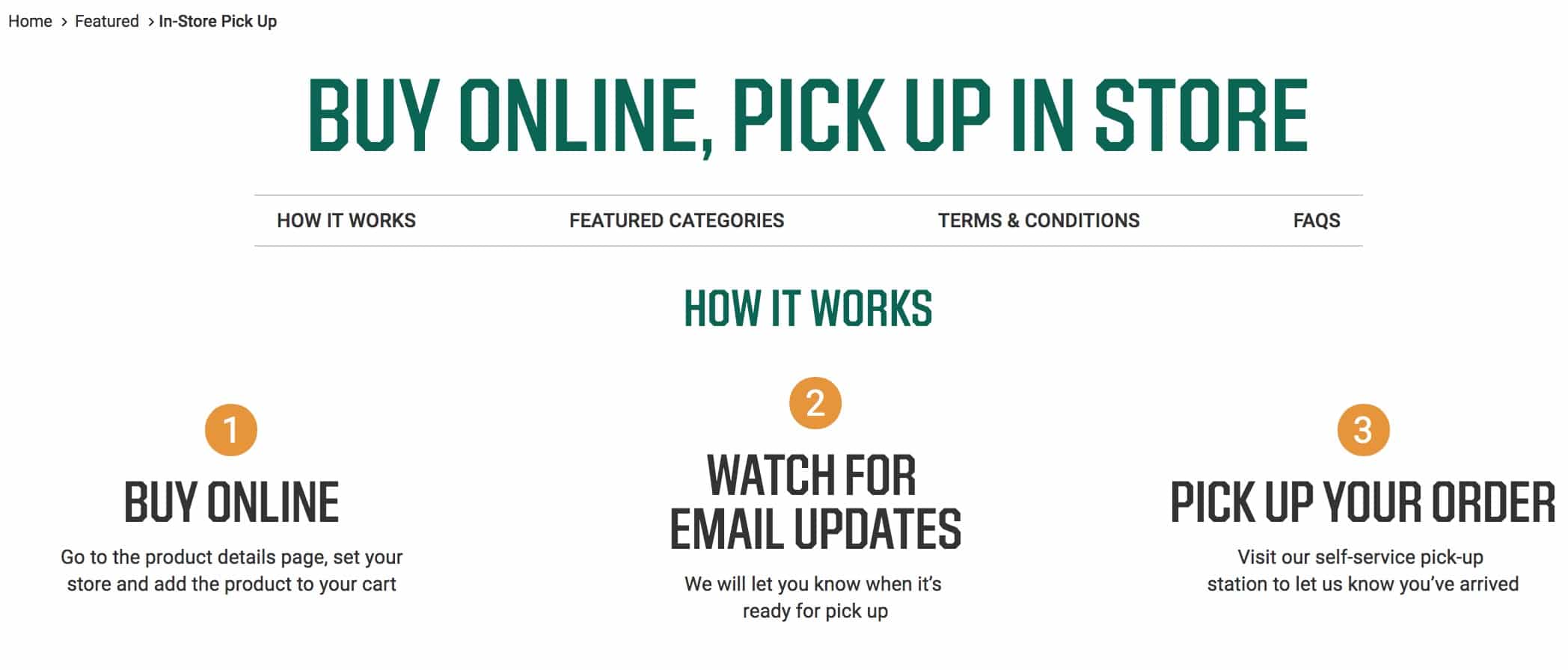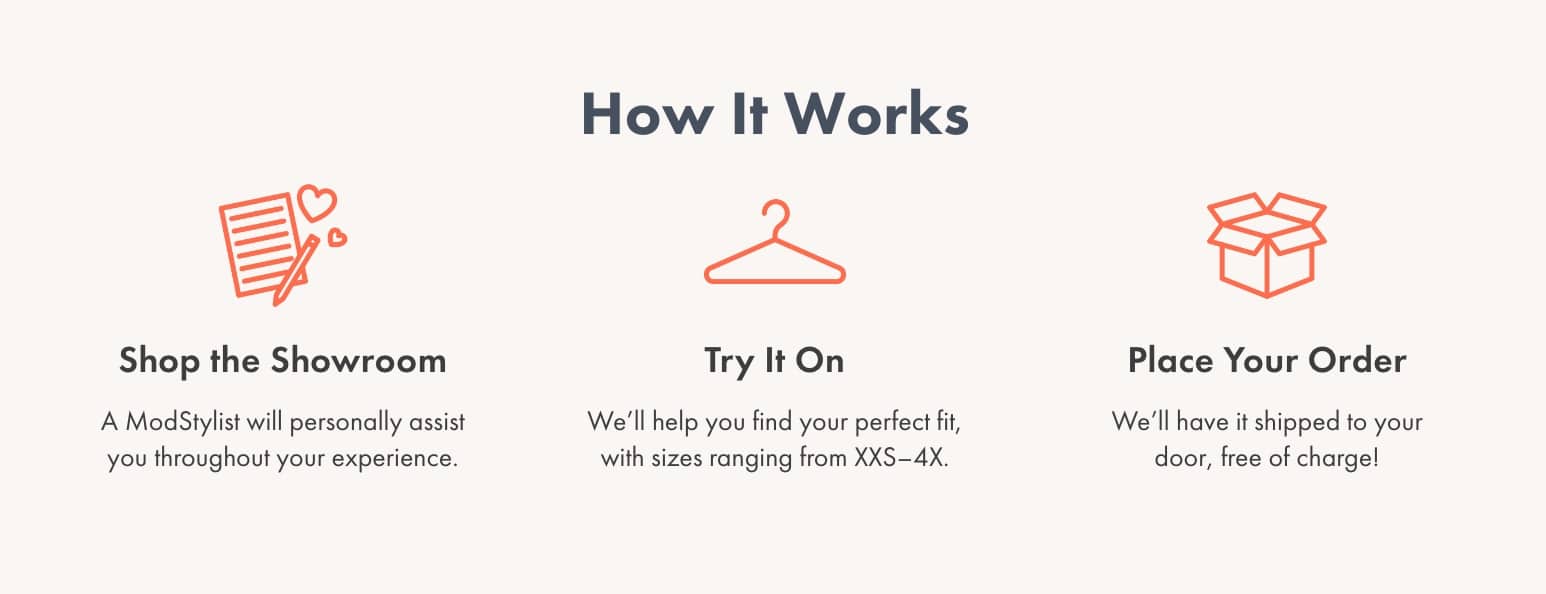Even retailers that have built cult online communities along with their physical locations –– think Sephora –– are rarely able to bridge the gap between meatspace (the “real world”) and cyberspace.
This is a huge loss for companies. Deloitte has reported that 80% of consumers don’t visit a physical store until after they’ve interacted with brands online. And while digital discovery is getting more intuitive and more accurate, customers in stores have the same option they’ve had for hundreds of years: ask a busy sales associate for help.
The good news is that digital innovation in the last 10 years means that brick and mortar and ecommerce are not as far apart as they seem anymore — especially when it comes to helping customers discover products.
In fact, the brick and mortar experience and ecommerce connecting has offered some innovations that allow customers in brick and mortar locations to scan and swipe their way through options just as easily as online shoppers.
1. In-Store Scanners
In-store scanners are devices or apps that offer retailers a way to bridge the divide between brick and mortar and ecommerce.
Now, customers can use an app to scan a tag in-store and easily bring up that item on a company’s website or app. This allows them to see all the available options, or order their size if the store is out of stock. Some grocery stores even have scanners that customers can use to check prices and even purchase from an in-store device or a phone app.
Scanners can also help people complete a purchase when they otherwise might not. For example, if a customer is browsing in-store and sees an item they love but they can’t carry a shopping bag around, a customer can easily add that item to their online cart for later, or even order it to their home from the store on their phone.

Think Dirty’s app shows at-a-glance information from scanning a bar code, and allows users to save items or add them to their shopping cart.
In-store scanning also has great potential to cater to niche concerns. Customers who want only organic foods might benefit from an “organic identifier” on a scanning app, or customers who only want clean beauty might use an app like Think Dirty, which identifies toxic ingredients in cosmetics –– ingredients that might not be listed out on a store display.
This brings the convenience of ecommerce into physical stores. It opens new opportunities for customers to shop, because they get the discovery of physically browsing with the ease of ordering or customizing online, with no wait, right from their own device.
This puts digital power in the hands of a consumer. If they have a question that they might otherwise go home and forget about researching, they can answer it immediately to empower their purchase.
2. Digital Kiosks
Digital kiosks can easily enhance a customer journey by offering them a robust ecommerce experience while they’re in stores.
If you’ve ever been to IKEA, you’ve probably seen a digital kiosk, which salespeople and customers can use to check in-store availability, shipping cost, color options, and more. In a store with as many products as IKEA, digital kiosks offer a superior experience for customers looking for help. It puts customers in the drivers seat to find information, rather than having to wait in line while salespeople find answers to relay.
Womenwear retailer Etam also uses self-service kiosks to improve their brick and mortar experience. Previously, if a customer came in with a reference photo, a salesperson would have to hand-curate a selection of clothing for that customer. Not only was this time consuming (and took salespeople off the floor), but was based on a salesperson’s imperfect knowledge of available inventory.

Shoppers can easily search for items available in-store by uploading their style inspiration in Etam stores.
Now, Etam offers up a digital solution: tablets in their stores where any customer can share images and instantly find every similar item in Etam’s stock, using Syte’s technology. If the item isn’t available in their store, the customer can easily order it straight from the tablet.
By using digital kiosks, customers get more options in a more convenient way, and retailers are expanding their customer experience without overloading existing staff or adding new hires to the payroll.
3. Reserve Online, Pay In-Store
Remember, the vast majority of people look online before visiting a store—80% to be exact. Reserving online and paying in-store is a clear example of this scenario playing out in a way that’s convenient for customers and retailers alike. Every innovation of digital search is available to customers –– visual search, price comparison, size and color options –– and they get the instant gratification of purchasing in-store. Plus, if they don’t like an item, they can easily return it when they get their hands on it, rather than waiting for shipping and return labels.
And there are many applications for this scenario. Think about a customer who needs a last minute gift. They can find an item on their lunch break, order it to pick up in-store, and swing by the shop on their way to their event.

Dick’s Sporting Goods explains how easy it is to order online and pick up in-store on their website.
And anyone who has mobility issues, limited time, or relies on public transportation wants to know that the items they want to purchase are going to be in-store when they get there. They can see items in-store, handle them, and walk away with their purchase knowing they’ve used their time and energy wisely on a purchase that otherwise they may not have made that day.
Big retailers are capitalizing on this because it follows the way we naturally search for things now: online first. But it also taps into our need for convenience and instant delivery by utilizing assets brick and mortar locations already have, instead of building, say, an arsenal of expensive delivery drones.
4. Shopping Aids
Blending brick and mortar services with online services can create a boutique feel that travels from in-store to online. It makes a customer feel they’re building a relationship with a brand, because the company remembers what they’ve done in-store and is able to use that to direct future purchases.
That’s where shopping aids come in. When a retailer has a physical location, they can build more sophisticated shopping aids than someone could build by entering their own information online.
Take ModCloth. In their physical stores, ModCloth offers custom sizing: a trained salesperson takes customer measurements and puts them into a customer profile. Anyone who has tried to take their own measurements at home knows it’s a hassle, so this service eases a major customer pain point.

Customers who take advantage of in-store sizing can get items shipped to them free of charge from ModCloth.
Those measurements can then be associated with a customer, so they always get accurate size calculations, no matter if they’re shopping in-store or online. CEO Matt Kaness explains, “[The app] allows the shopper to get personalized recommendations after her visit, creating a high degree of trust that the recommendations will fit.”
It’s easy to see how hybrid in-store and online shopping aids could be key across retailers. Anything customers like to try on or need to have fitted in person can be brought online with digital tools. Take an eyeglass retailer: they could offer advanced 3D modeling in-stores, where people can create and store images of their face. Then, the next time they want to try on glasses, they could access that model online.
Custom shopping aids are a great way to demonstrate that you value customers as individuals and they also act as an anchor that keeps them coming back to your retailer.
5. Smart Mirrors
Smart mirrors are a new and innovative way to bring a digitally enhanced shopping experience to brick and mortar. How do they work? These mirrors are interactive interfaces that allow people to play around with inventory, color, and ordering, all without leaving the dressing room.
Smart mirrors can even act as stylists. At Syte, we see the smart mirror as a great way to take the best features of an in-store kiosk and add a more interactive angle. Lihi Pinto Fryman, co-founder and CMO of Syte, sees smart mirrors as a way to expand a customer’s options of what they can do in a physical store.
“The mirror uses our proprietary AI to display visually similar items alongside UGC to inspire the shopper and expose them to all relevant available products,” she says. That means that discovery is broadened for those who come into stores, and they will be able to connect their digital search methods, like their favorite Instagram outfit posts, with their physical shopping experience.
Ralph Lauren, Bergdorf Goodman, and Neiman Marcus are all implementing smart mirror technology for fashion and cosmetics. With interactive experiences that add value, like ordering from a mirror or getting tips on where to place a highlight based on your facial structure, smart mirrors are combining the immediacy of brick and mortar with the innovations of ecommerce.
Innovate the future
If you are a retailer with a big stake in ecommerce and a big presence in brick and mortar, bridging the digital divide is critical. Allowing customers to search, purchase and explore both in-store and online caters to their competing needs for convenience, choice and instant gratification.